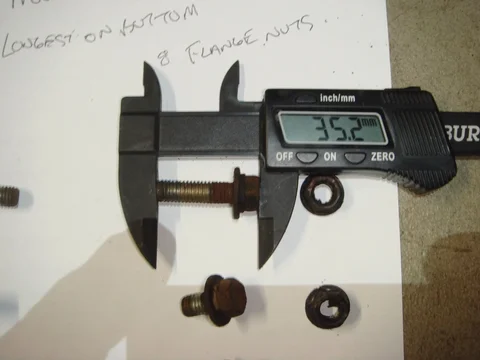Great-
Your camera will be your friend during disassembly. Take way more pictures than you think is necessary of everything before, during & after removal. Then label everything very carefully.
There are a lot of specific bolts that are intended for a specific location. Don't just toss removed bolts into a bucket.
One way to be a sure that every bolt gets returned to is original location is to take a picture of it in calipers with a note next to it. Like below.
When the project drags on, it's almost impossible to remember what went where. Your camera will save you.


Your camera will be your friend during disassembly. Take way more pictures than you think is necessary of everything before, during & after removal. Then label everything very carefully.
There are a lot of specific bolts that are intended for a specific location. Don't just toss removed bolts into a bucket.
One way to be a sure that every bolt gets returned to is original location is to take a picture of it in calipers with a note next to it. Like below.
When the project drags on, it's almost impossible to remember what went where. Your camera will save you.



 . I am talking about the jack under the engine on the stand. I would never lighten the flywheel that's what makes these crawl so well.
. I am talking about the jack under the engine on the stand. I would never lighten the flywheel that's what makes these crawl so well.